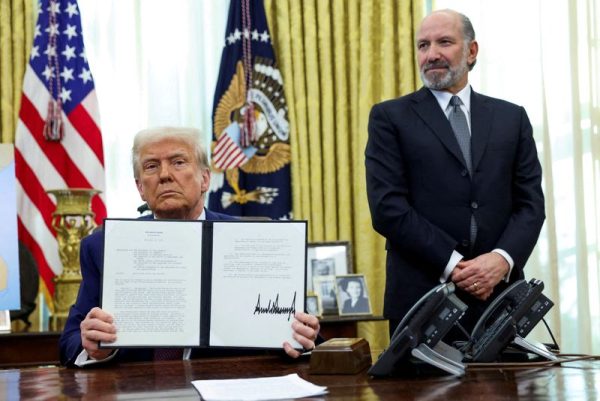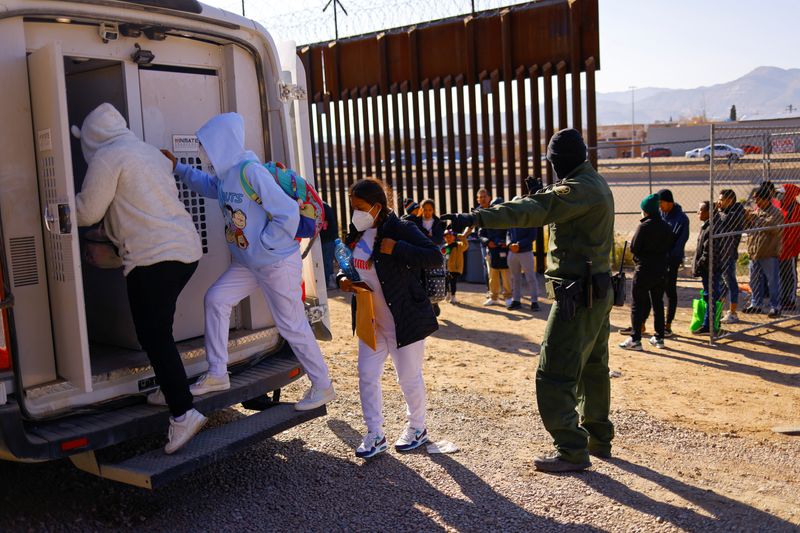After his inauguration on January 20, 2025, Donald Trump signed a record 26 executive orders in front of a large audience–more than any president had signed on their first day in office. He went on to sign many more in the following weeks.

These orders have consequences for the future of the United States, as many of them pertain to immigration.
According to the Congressional Budget Office, as of 2025, the fertility rate in the United States is 1.62 babies per female, this number is only expected to decrease in the coming decades. A fertility rate of 2 babies per female is needed to maintain population. But the U.S. population has grown almost 1% since 2023. That is almost an increase of 3 million people.
Census.gov says “as the nation’s population surpasses 340 million, this is the fastest annual population growth the nation has seen since 2001 — a notable increase from the record low growth rate of 0.2% in 2021. The growth was primarily driven by rising net international migration.”
Immigration accounted for 84% of the population growth in the United States. Immigrants also make up a sizable percentage of they younger demographic and a good chunk of the workforce.
If it were not for immigration, some predictions estimate that the U.S. population would decrease almost 60% in the next century, nearly 200 million people.
A majority of Trump’s orders are geared toward curbing immigration, specifically from Latin America, and during his campaign, he promised to deport millions of undocumented immigrants using Immigration and Customs Enforcement (ICE) agents.
Trump’s first day presidential executive orders supported this by ordering ICE to deport people without due process. He also enlisted the U.S. military to block the flow of immigrants at the southern border with Mexico. The orders requires that anyone arriving at the United States border without sufficient documentation be barred from entering and receiving any aid from the U.S. government. This includes asylum seekers, people seeking humanitarian aid and unaccompanied minors.

According to the White House website, “I therefore direct that entry into the United States of refugees under the USRAP be suspended — subject to the exceptions set forth in subsection (c) of this section.”
He also declared that anyone born to non-U.S. citizens in the United States would no longer be eligible for U.S. citizenship. Courts have blocked this order from being enacted and the courts indicate that it may be unconstitutional.
Along with all these orders, he suspended refugee settlement programs and promised future travel bans to certain countries. This is all for the purpose of limiting immigration.
Effects of a shrinking, aging population
But because immigration is the only thing keeping the U.S. population growing, what would the effects of a shrinking, and aging population be?
One effect could be limiting, if not abolishing social security. As more people get to retirement age and live longer lives, social security will be spread out more thinly. But as the birth rates decrease, there will be fewer working age individuals contributing to social security. This could mean the end to all social security benefits in the coming decades.
Another effect of a shrinking population is the toll it would take on the economy. There will be fewer working age people in the United states in these coming decades, meaning fewer workers in the job market. This could be bad for many businesses, especially small ones, but fewer working age individuals are available in America, Artificial Intelligence, or AI, could replace people in many sectors.
One positive of a smaller population could be a lessened toll on the environment, with decreased CO2 emissions helping to mitigate the effects of climate change.
This is all just speculation, assuming the effect these executive orders could have in the long run. What could happen with these attempts to limit immigration, we will just have to wait and see.
It is important to note that executive orders are not law, are issued by all presidents, and can be removed by future executive orders. They are also challengeable in court.
